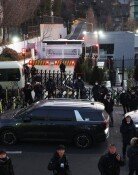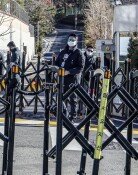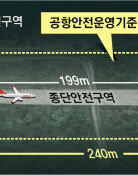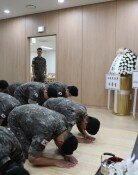Nuclear inspection should be accompanied by actual denuke steps
Nuclear inspection should be accompanied by actual denuke steps
Posted October. 09, 2018 07:52,
Updated October. 09, 2018 07:52
“We made significant progress. We will continue to make significant progress,” said U.S. Secretary of State Mike Pompeo following his fourth visit to Pyongyang, adding that the North will invite an inspection team to confirm the dismantlement of its Punggye-ri and Dongchang-ri nuclear test sites, foreign press reports said. Since Pompeo’s visit, both North Korea and the United States have implied that they agreed to hold a second Trump-Kim meeting, using phrases such as a “scheduled DPRK-U.S. summit” and an “upcoming second U.S.-North Korea summit.”
The revived momentum for denuclearization is expected to first lead to the inspection team’s visit to Punggye-ri and Dongchang-ri test sites. While the two sides must have had an in-depth discussion about steps towards denuclearization and corresponding measures, Pompeo has only disclosed the North’s willingness to invite inspectors for now. North Korean leader Kim Jong Un had initially promised to invite experts and journalists from the South and the United States to observe the dismantlement of the Punggye-ri test site, but experts were later excluded to witness the site’s explosion, fueling skeptical views about whether it was an “irreversible measure.” Thus, the regime’s acceptance of inspectors is nothing more than a belated implementation of its earlier promise made five months ago.
Still, Washington appears to be expecting that this will serve as a first step towards inspection and verification, which are key to its purpose of achieving the “final, fully verified denuclearization (FFVD).” However, it remains to be seen whether the inspection team, even if allowed to enter the country, will be able to measure radiation or collect samples. Moreover, the United States did not mention the submission of North Korea’s list of nuclear arsenal and facilities at all. If the regime insists that the U.S. administration first take pre-emptive measures while unilaterally shutting down its test site and allowing inspectors to just observe the scene, we will not be able to unearth the truth of North Korea’s nuclear development, let alone verify its dismantlement.
As such, specific plans for denuclearization still remain uncertain. Yet, the two sides are having higher hopes of striking a big deal between Trump and Kim. All eyes are also focused on the timing and location of a second summit, and whether it will take place before or after the U.S. midterm elections scheduled for Nov. 6. Pyongyang aims to hold it at an earlier date to reduce any post-election uncertainties, and Washington is taking a cautious approach as it wants a visible achievement ahead of the elections. Yet, there are concerns that a second summit will end up being exactly like the first one, being all show and no substance.
“Chairman Kim Jong Un’s visit to Russia and Chinese President Xi Jinping’s visit to China are expected to take place soon. The possibility of a summit between Kim and Japanese Prime Minister Shinzo Abe is also open,” said President Moon. “A new order is being created on the Korean Peninsula.” A question arises whether his remarks will overly heighten expectations for a summit diplomacy led by Kim Jong Un. To keep the dialogue going is certainly important, but we should not forget that it is our duty to pay a close attention to whether we risk losing something to sustain the momentum.







